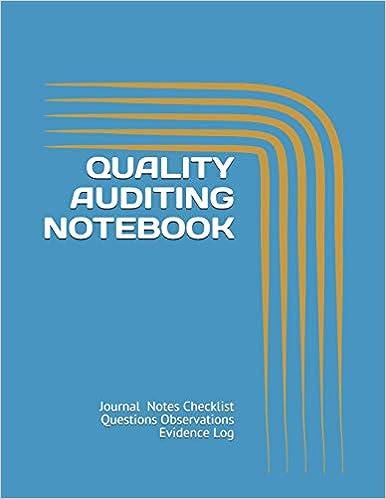Question
Part 1) Hashem Oghli is a manufacturer of plastic products. Unfortunately, one of the moulding machines is out of order and needs to be replaced.
Part 1)
Hashem Oghli is a manufacturer of plastic products. Unfortunately, one of the moulding machines is out of order and needs to be replaced.
After receiving quotes from various suppliers, you find two types of moulding machines that are suitable. Type A moulding machine is a high-end machine; it has a higher purchase price but makes higher quality products that sell better on the market and bring more revenue. Type B moulding machine is lower-end; it is cheaper, but produces lower quality products and higher scraps that require rework. In addition, this machine produces less environmental pollution, therefore due to governmental program, this machine is tax exempt.
Hashem Oghli's managment asks you to evaluate these machines and recommend the best one. Cost structures of the two types are given below:
Type A machine:
Purchase price = $100,000
Salvage value = $20,000
Yearly revenue = $60,000
Yearly maintenance cost = $15,000
Yearly cost of scrap = $5,000
Type B machine:
Purchase price = $15,000
Salvage value = $0
Yearly revenue = $40,000
Yearly maintenance cost = $15,000
Yearly cost of scrap = $15,000
It is expected that both machines depreciate fast and will have to be replaced after three years (the company uses straight line depreciation method).
The company is using a discount rate of 5%. The tax rate for machine A is 10% and for machine B is 0%. (Note that neither choice would impact working capital.)
Below, you can find the incremental income statement for buying machine Type A. However, you can derive the incremental statement for Type B machine by replacing the relevant values. Note that the operating expense includes cost of maintenance and scrap production.
| Annual Income Statement Item | Y1 | Y2 | Y3 |
|---|---|---|---|
| Revenue | $ 60 | $ 60 | $ 60 |
| Operating Expenses: | |||
| Maintenance | $ (15) | $ (15) | $ (15) |
| Scrap Production | $ (5) | $ (5) | $ (5) |
| Earnings Before Interest, Taxes, Depreciation and Amortization (EBITDA) | $ 40 | $ 40 | $ 40 |
| Depreciation | ? | ? | ? |
| Earnings Before Interest and Taxes (EBIT) | ? | ? | ? |
| Taxes | ? | ? | ? |
| Net Operating Income After Tax | ? | ? | ? |
Note: all values are in thousand dollars. Use one decimal point precision in your calculations and answers.
Your task is to analyze the financial performance of the two options over three years and compare them. Answer the following questions.
What is the depreciation of Type A machine in year 1? __________________________
What is the depreciation of Type B machine in year 3? __________________________
Part 2)
What is the Free Cash Flow (FCF) for Type A machine in year 0? ____________________
What is the Free Cash Flow (FCF) for Type A machine in year 2? ____________________
What is the Free Cash Flow (FCF) for Type B machine in year 1? _____________________
What is the Free Cash Flow (FCF) for Type B machine in year 3? _____________________
Part 3)
What is the Net Present Value (NPV) for Type A machine? ________________________
What is the Net Present Value (NPV) for Type B machine? _______________________
Part 4)
Which of the following are correct? (Select all the correct answers)
1) In this problem, more information is needed to determine which machine is a better investment.
2) In this problem, the company should buy Type B machine.
3) In this problem, both machines are equally good options.
4) In this problem, the company should buy Type A machine.
5) In general, the investment option with the highest NPV should be chosen.
6) None of the Above
Step by Step Solution
There are 3 Steps involved in it
Step: 1

Get Instant Access to Expert-Tailored Solutions
See step-by-step solutions with expert insights and AI powered tools for academic success
Step: 2

Step: 3

Ace Your Homework with AI
Get the answers you need in no time with our AI-driven, step-by-step assistance
Get Started


